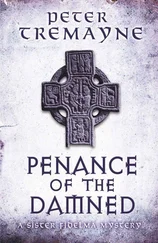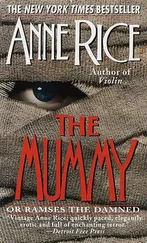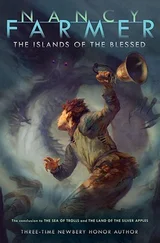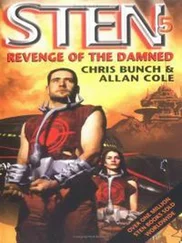He shuffled his feet and gazed off for a moment. “Okay, guys, let’s get squared away here,” he said. Then silence. We looked at one another.
“What the hell’s wrong?” I asked.
“The Japs got the skipper a few minutes ago on the ridge,” he said. It was like a kick in the stomach. Somebody threw down the base plate and the mortar tube. Somebody said, “Goddamn.” Sledge turned away. We stood there paralyzed and silent.
Finally Marmet pulled himself together. “All right,” he said. “All right. Let’s move out.” And we did.
It was more than a death in the family, losing Hillbilly Jones and Andy Haldane like that. They had been on Guadalcanal together, on New Britain and Peleliu. I found out later Haldane had been about to recommend me for the Silver Star for our action at the bunker on Ngesebus. He was killed before he could write it up. It didn’t make things any better and it didn’t make things any worse, as far as I was concerned. Hillbilly and Ack-Ack had been the core of our officers, leaders of men. Leaders of Marines.
* * *
First Lieutenant Thomas “Stumpy” Stanley was brought in from the battalion command post to take charge. The mortar squads were lobbing shells over the rim of Hill 140 into the northern end of the Horseshoe and at Walt Ridge beyond.
Jap artillery was answering us less and less. We got the feeling they were just waiting in their holes, like spiders. It rained off and on, and when the sun came out the rain turned to steam. The smell of death and the flies hung over everything, worse than ever. From where we looked out there wasn’t a speck of green anywhere on the island. We’d stripped it bare. All that was left was gray rock and rolling smoke.
On the thirteenth, K Company advanced 150 yards and straightened out the lines. We spent part of the next day with demo squads, sealing caves and stringing communication wire to hinder infiltrators. We figured the more pressure we put on them, the more determined the Japs would be to infiltrate, or even to break out. We heard that the Eighty-first Army Division, the “Wildcat” Division, was on its way from Angaur to relieve us. We also heard that command had declared the assault phase of the invasion—whatever that meant—officially ended. It had been twenty-eight days since we came ashore on Orange Beach Two.
This is where we finished our war on Peleliu. At dawn on October 15, the Army troops marched in, looking grim. They had six more weeks of combat ahead of them. We were headed out. We boarded trucks to the north end of the island, where the Seabees had set up a new bivouac area. For the first time in months we slept in tents, and the tents had plywood decks, which we hadn’t even had on Pavuvu. There were showers, a cookhouse, a mess tent where we could eat sitting down at tables. They had hung a sheet between trees where they could show movies. We shaved, washed our hair, brushed our teeth. Then we brushed our teeth again, just because we could do it.
This idyllic life didn’t last long for the mortar section. We were sent out to the east road and told to set up our guns facing the sea, just in case the Japs tried a landing. (It was not such a far-fetched idea. We heard later the Japs sent a small force over from Babelthuap in mid-January. It was intercepted and all but two of the eighty or so invaders were killed.) A few miles to the south we could hear the Army’s guns pounding away at the Pocket.
Finally they sent us down to Purple Beach to await transport back to Pavuvu. We were issued fresh uniforms, new boondockers, and that wonder of wonders, clean white socks. We burned the rags of our old uniforms and slept in hammocks, our sleep occasionally disturbed by tracers from the distant fighting. I dreamed of Florence, of the little bungalow we’d set up someday, of children running around the house.
A new cemetery appeared alongside the main runway at the airfield. Somewhere among the crosses Hillbilly Jones and Andrew Haldane were at rest. Altogether, the First Marine Division had lost more than 1,250 Marines on Peleliu. More than 5,400 had been wounded. There was no way to count the Japs, but we had killed more than ten thousand for certain. I read somewhere afterward that we had fired almost 16 million rounds of ammunition of all kinds during our time on Peleliu. That works out to more than 1,500 rounds per Jap. That seems about right.
The Fifth Marines had been the only regiment to achieve all its combat objectives. We had established our beachhead, crossed the airfield, occupied Ngesebus, secured northern Peleliu and whittled hundreds of yards off the Pocket. Of course none of us was thinking about any of this while we were at Purple Beach. We were just waiting for our ship to come in.
Transports arrived and one by one the other battalions departed, until we were the last Marine unit on the island. Finally, on October 26, the USS Sea Runner, a Navy troopship, appeared offshore.
The next morning Higgins boats took us out through heavy seas. The Sea Runner had thrown cargo nets over the side, and the little boats bucked on the waves while we tried to grab the nets and pull ourselves to. There wasn’t much talk, no grab-ass going on. We hung on to the nets and started up, hand over foot. I had to stop and rest. We had full packs and the climb seemed to go up and up forever. At the top, sailors reached over and hauled some of us aboard who couldn’t make it. We lay on the deck gasping. No doubt about it, we were a bunch of beat-up raggedy-ass Marines.
The day before we left Peleliu for the Sea Runner , K Company assembled on Purple Beach for a photographer. I have a framed print of the photo hanging in my living room right next to my KA-BAR, some plaques, a flag and some other Marine memorabilia. I look at it every so often. We’re standing there in the strong morning light, on coral sand under swaying palm trees. There are about eighty-five of us, out of the 235 who landed on Peleliu. All of us are skinny. I weighed 138 pounds, down from 165 pounds when I joined the Marines. About half of us are shirtless. None are smiling. I’m the tall one standing right in the middle of the front row.
And you know what? I have absolutely no memory of having that picture taken.
CHAPTER 7
Second Battle of Pavuvu
We were a pretty quiet bunch for the six days it took us to sail from Peleliu to Pavuvu. A destroyer escort tailed us most of the way, a reminder that enemy submarines were lurking. Hillbilly Jones wasn’t there with his guitar, so we didn’t have our sing-alongs on the deck of the Sea Runner . There wasn’t any point in polishing and repairing weapons. We were worn down and sobered. What we’d been through hadn’t sunk in, and whatever it was we were heading to wasn’t yet a reality.
Pavuvu looked about the same as we pulled into Macquitti Bay. We were returning to the same rows of tents, the same streets, the same palm trees, the same rats and land crabs, but they’d made a few changes. The Higgins boats took us in to a new steel pier, so we knew the Seabees had been at work. The first thing we saw on the beach was half a dozen Red Cross girls, standing behind decorated tables. They offered us paper cups of grapefruit juice. I suppose it was somebody’s idea of a welcome, but after what we’d been through it just hit me as the strangest thing on earth. What were they doing out here in the middle of the war? I walked on by, along with a few of the others. But Snafu and Santos headed straight for the girls.
They had started construction on a USO canteen near the beach. I never did visit it much, but it was there for those who wanted it.
We sat around until trucks drove us up to Third Battalion’s bivouac area. They’d surfaced the grid of streets with crushed coral since we’d left, and the last of the rotting coconuts had been cleared away. The tents were new, with plywood decks. Seabags with our personal stuff had been piled in the center of each tent. As soon as we started unpacking, the land crabs came skittering out in every direction.
Читать дальше











